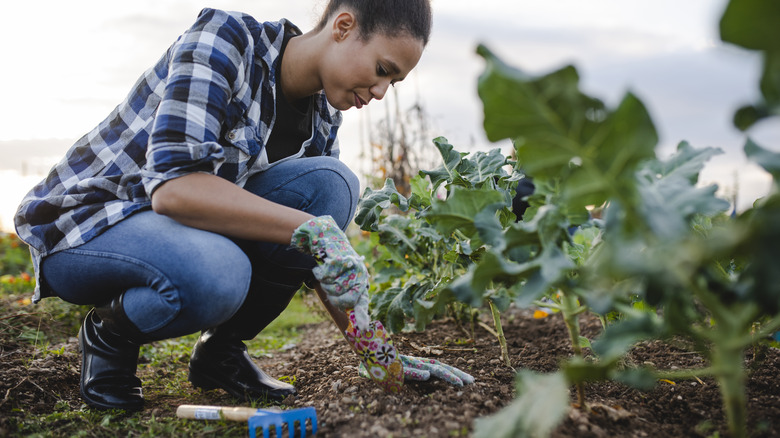If you want to redo your garden or give your yard a little TLC, consider adding some fresh dirt. Or, instead, you may opt for something like loam or topsoil for your garden. Although they may seem similar, topsoil is just that, soil. On the other hand, loam is made up of garden- and lawn-friendly sand, clay, and silt.
When it comes to the specific combination found in loam, it’s a rather loose mix that has empty pockets that give water, air, minerals, and other beneficial substances, such as organic material, a chance to settle in. Because of this, loam offers plants the perfect space to grow. As for topsoil, the name gives away the basic nature in that it’s the soil that can (or should) be found at the top of a garden. Usually reaching around 2 to 10 inches down, it lacks the organic matter that may be found in loam. However, it tends to contain more nutrients than the basic soil found deeper in the ground. Although this makes it seem like loam and topsoil are only slightly different, there are a few key things that you should know if you’re considering using either one, such as price and everyday use.
How, when, and where to use loam versus topsoil

Before you start shopping for whatever might improve the state of your garden or lawn, you need to figure out if you should opt for loam, topsoil, or both. To do this, you need to know how, when, and where to opt for either one because you can use them in different ways. First, topsoil can be added to spots that need a touch of healthy soil. This can include areas where you want to grow fresh grass, lay down turf, or set up in-ground and raised garden beds. Beyond that, if you’ve moved into a house that’s just been constructed, the topsoil in your yard might have been removed, yet not necessarily replaced while the home was being built. In this case, scatter new topsoil wherever needed.
As for loam, if your yard or garden already has topsoil and you want to give it a boost to grow flowers, vegetables, or trees, then loam is your best bet. Indeed, flowers that prefer a lot of sun or a bit of shade will thrive in loam, as will veggies, especially if you adjust fertilizers as required. Trees love the nutrients and moisture that loam provides, and the fact that their roots can easily establish themselves in the relatively loose bed. This makes loam a valuable addition to your yard, which is why, just like topsoil, it’s surely worth the cost.
The cost of loam and topsoil varies
Just like other aspects of topsoil and loam, they differ when it comes to price. For instance, you can expect to pay anywhere from $250 to $1,000 or an average of $600 for topsoil. This will cover both the price of the soil as well as having it applied to your garden or yard by a professional. If you don’t need a pro, then you can simply pay for the topsoil itself, which will be around $2 to $5 for each bag or $10 to $50 for every cubic yard, depending on how it’s sold, where you buy it, and whether or not you can get a deal for purchasing larger quantities.
There are also factors that will affect how much loam will cost. That includes the fact that there are two kinds of loam that are sold at different price points. The first is screened loam which has been cleared of impurities like grass, weeds, and random rubbish. It sells for about $17 to $25 per cubic yard. The second variety is super loam which is pricier at $30 to $50 per cubic yard. Of course, as the name suggests, it’s a snazzier option with added compost that provides extra nutrients and just the right amount of moisture to keep your plants happy and your garden in tip-top shape.